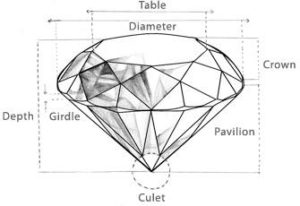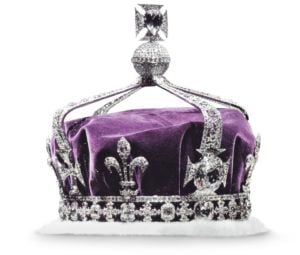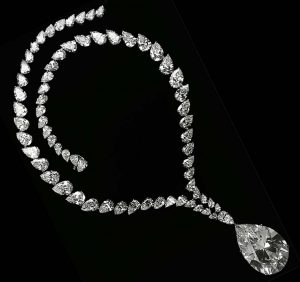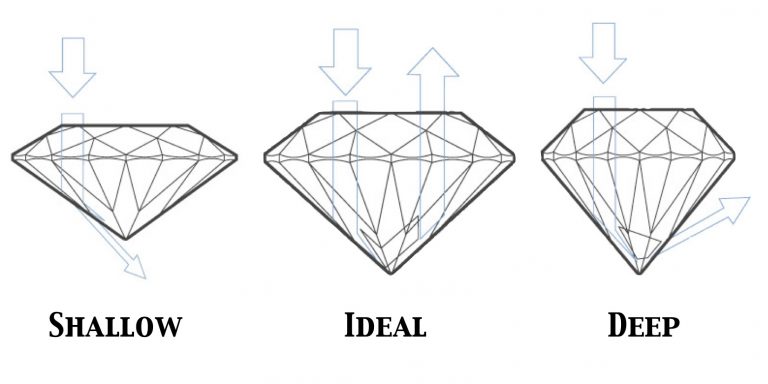Beyond the Four Cs: Why Some Diamonds Cost More than Others

In an earlier blog post entitled “Diamonds: How to Know What You’re Buying”, we talked about the four Cs: clarity, cut, carat weight and colour. We described in detail how these main factors influence the cost of a diamond.
Yet there are also secondary factors which also impact a diamond’s value. These include the following:
Culet
The culet is the point at the bottom of a diamond. The culet size and angle can affect its overall worth.
A diamond’s culet is usually faceted or flat. Ideally, the culet should be small and be in the exact centre of the base of the diamond. The perfect culet angle is 98.5°; deviations from this will reduce the stone’s value.
Girdle
The girdle is the point at which the crown meets the pavilion of a diamond. A perfect girdle will be equally thick on both sides. Unequal girdle size will have an adverse impact on the symmetry of a diamond, which will hinder the way it reacts to light (light performance). This in turn could reduce the value of the diamond in question.
A diamond cutter will sometimes change the shape of a stone to remove a blemish, or preserve its weight. Yet the ideal girdle outline should be perfectly round. A ‘wavy girdle’ is the result of the diamond cutter failing to angle the facets properly. This will also have a negative effect on a diamond’s light performance and value.
Laser inscriptions
The effect of laser drilling on the value of a diamond is the subject of a great deal of debate and controversy in the industry.
From the 1980s, when laser technology was developed, some diamond certification labs (most notably the GIA), began to inscribe small grading numbers, logos, or even personal messages on the girdle edge of diamonds. This would create imperfections and reduce the clarity of diamonds, which in turn would often reduce their value.
However, laser inscriptions have actually been known to increase the value of certain diamonds. This is because they act as proof of the provenance and quality of the diamond. As they are very hard to fake, such inscriptions also help to prevent fraud in the industry.
Surface polish
A common term in the diamonds industry, ‘brilliance’ refers to the appearance of white light in the stone. Light passing through the top facets and bouncing off those at the bottom of the diamond is what produces this brilliance.
Although the human eye can detect brilliance to a certain extent, experts must use a Brilliance-Scope to measure it accurately.
Brilliance
A common term in the diamonds industry, ‘brilliance’ refers to the appearance of white light in the stone. Light passing through the top facets and bouncing off those at the bottom of the diamond is what produces this brilliance.
Although the human eye can detect brilliance to a certain extent, experts must use a Brilliance-Scope to measure it accurately.
You May Also Like

A Glimpse into the Queen’s Diamond Collection
Queen Elizabeth II owns a huge and historic collection of jewels, and ...

The Glamorous Story of the 68-Carat Taylor-Burton ...
The whole story of the Taylor-Burton diamond is glamorous to a fau ...

Diamonds: How to Know What You’re Buying
When choosing a diamond for your ring, necklace or any other piece ...
